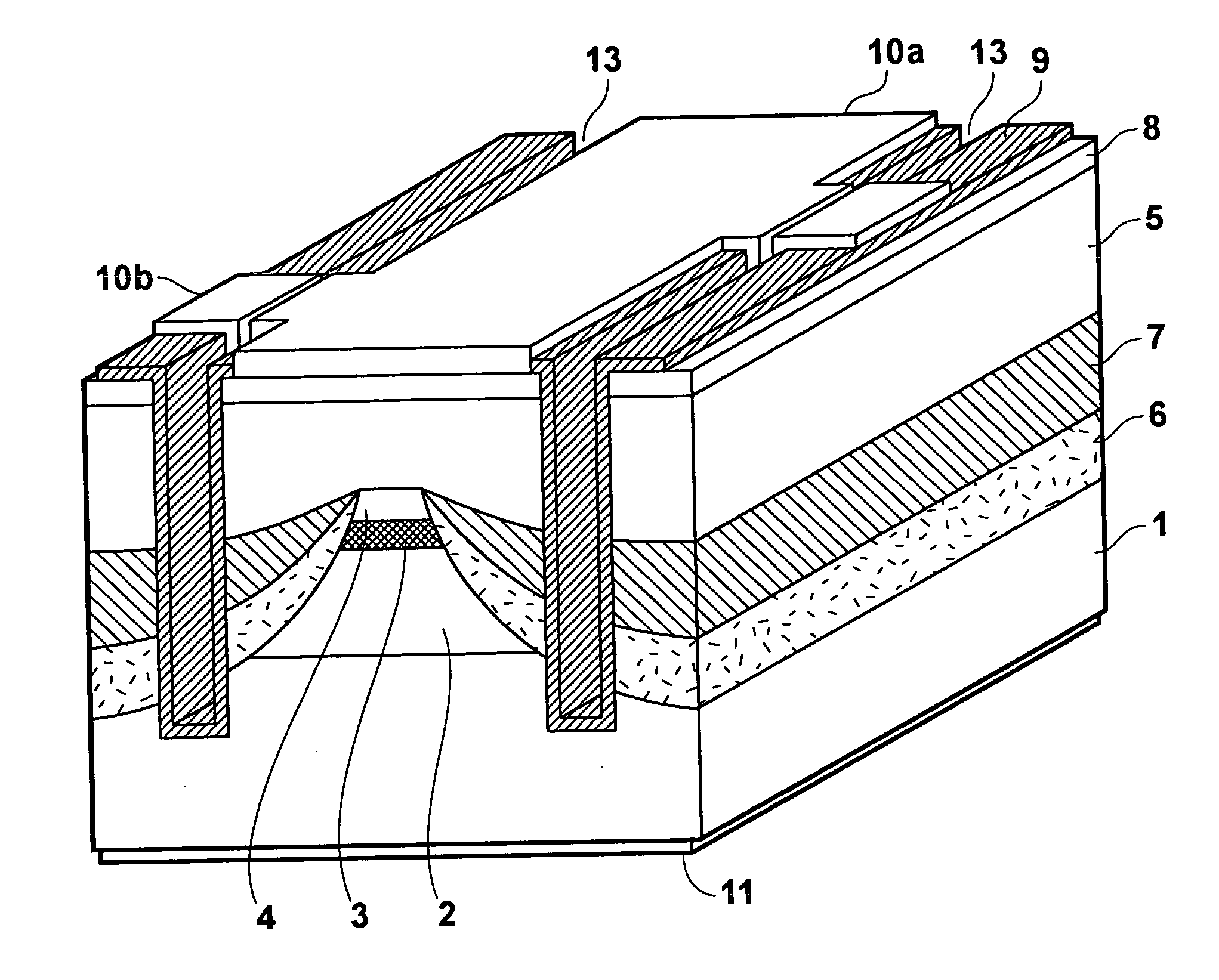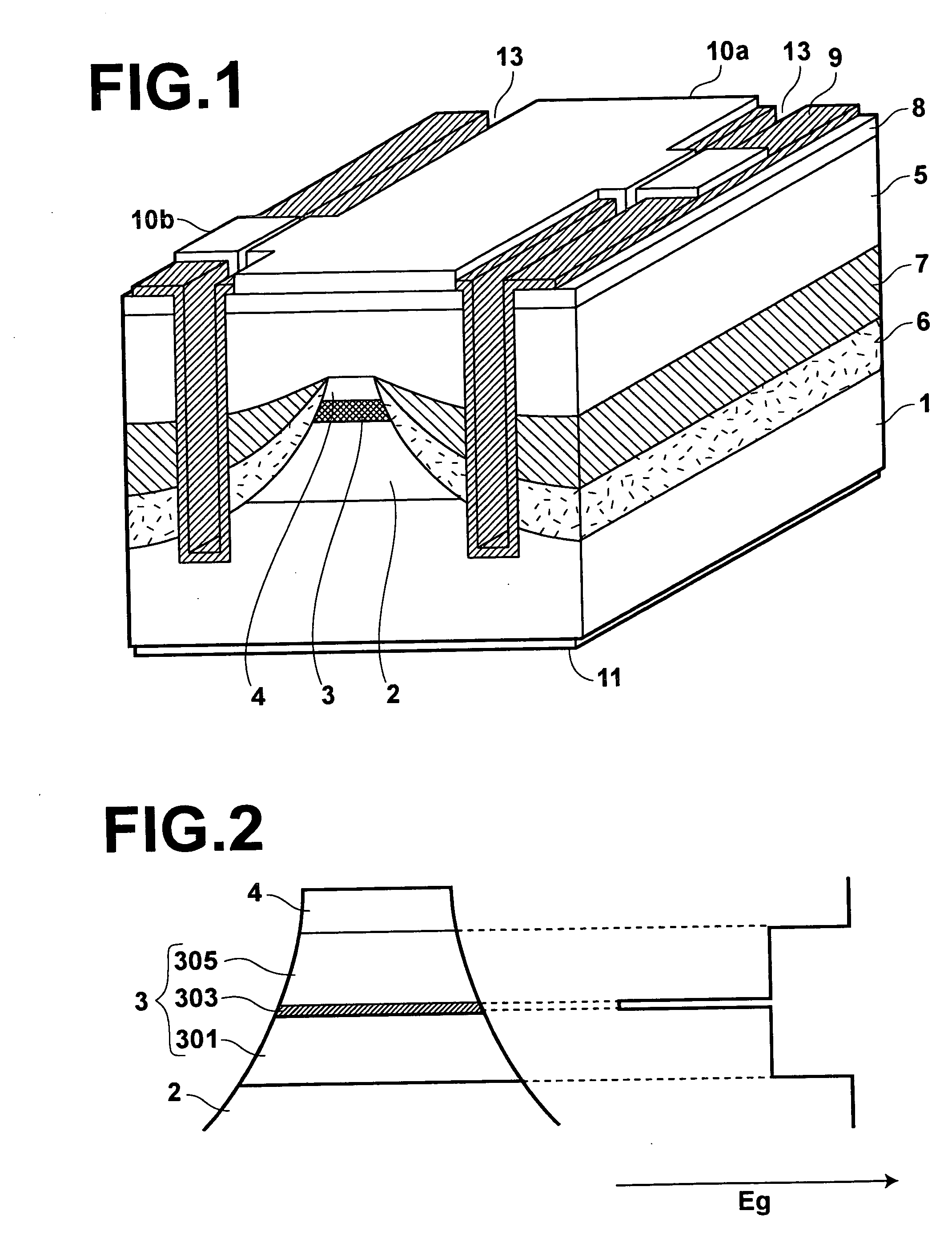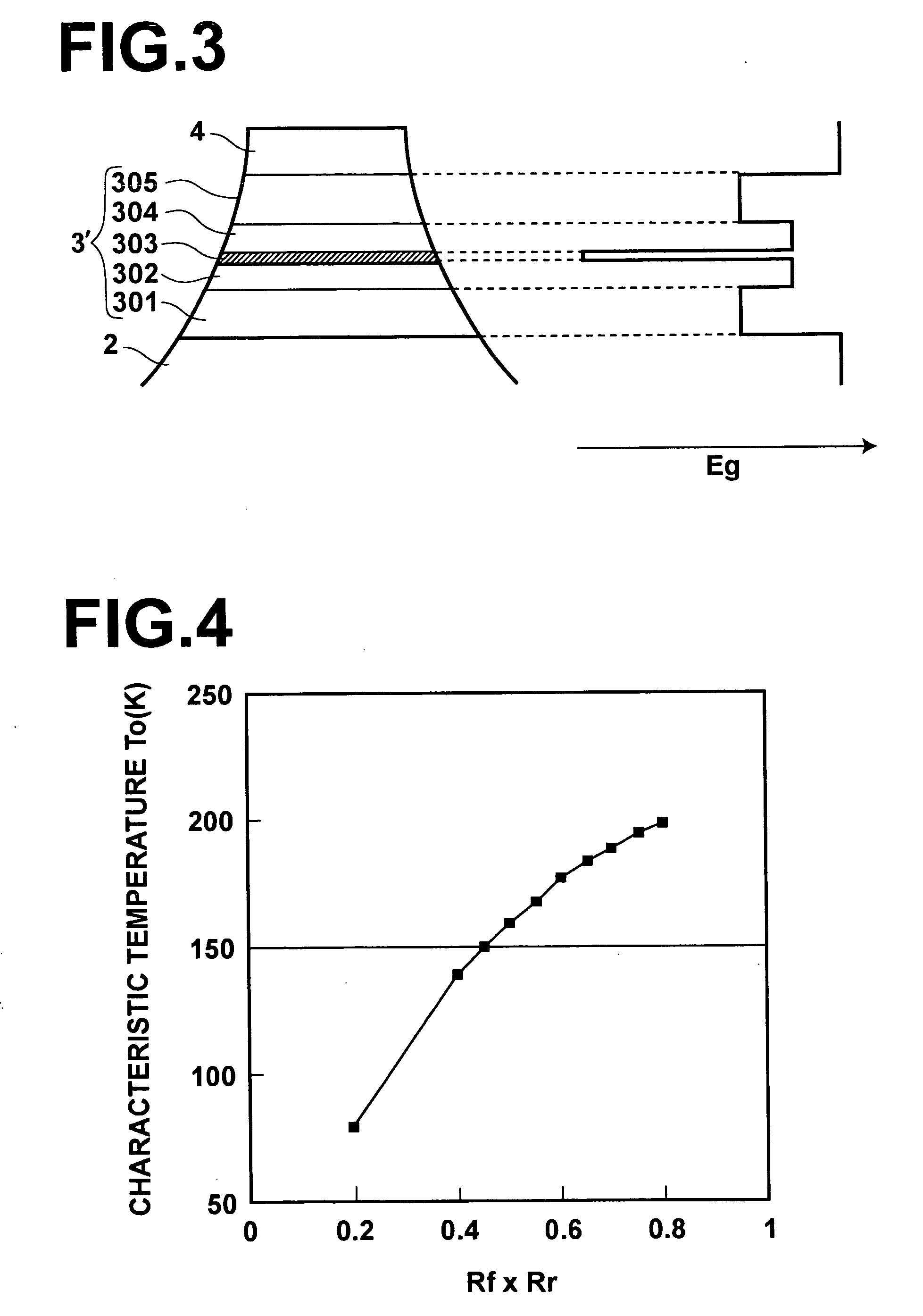Semiconductor laser element having InGaAs compressive-strained quantum-well active layer
- Summary
- Abstract
- Description
- Claims
- Application Information
AI Technical Summary
Benefits of technology
Problems solved by technology
Method used
Image
Examples
first embodiment
[0029]FIG. 1 is a schematic perspective view of the semiconductor laser element according to the first embodiment of the present invention.
[0030] As illustrated in FIG. 1, the semiconductor laser element according to the present embodiment contains a stripe-shaped, layered structure in which an n-type In0.49Ga0.51P lower cladding layer 2 having a thickness of 2.0 micrometers and being doped with impurity of 1×1018 cm−3, a light-emission layer 3 having a thickness of about 100 nm, a p-type In0.49Ga0.51P first upper cladding layer 4 having a thickness of 1.0 micrometers and being doped with impurity of 1×1018 cm−3, and a p-type GaAs cap layer (not shown) having a thickness of 10 nm and being doped with impurity of 1×1018 cm−3 are formed in this order on an n-type GaAs substrate 1. As illustrated in FIG. 1, the stripe widths of the n-type In0.49Ga0.51P lower cladding layer 2, the light-emission layer 3, the p-type In0.49Ga0.51P first upper cladding layer 4, and the p-type GaAs cap lay...
second embodiment
[0041] Next, the semiconductor laser element according to the second embodiment of the present invention is explained below. The semiconductor laser element according to the second embodiment of the present invention is almost identical to the first embodiment except for the structure of the light-emission layer.
[0042]FIG. 3 is a diagram indicating details of the structure of the measured emission layer 3′ in the semiconductor laser element according to the second embodiment (in the left half of FIG. 3) and the bandgaps in the respective layers of the emission layer 3′ (in the right half of FIG. 3).
[0043] According to the second embodiment, the light-emission layer 3′ has a structure in which an n-type or i-type InGaAsP lower optical waveguide layer 301 having a thickness of 40 nm, an i-type GaAsP tensile-strain carrier-blocking layer 302 having a thickness of 10 nm and a bandgap Eg of 1.65 eV, an i-type In0.2Ga0.8As compressive-strain quantum-well active layer 303 having a thickn...
third embodiment
[0055] Although, according to the first and second embodiment, the parasitic capacitances which occur at the interfaces with the current-blocking layer are reduced by forming the pair of trenches 13 on both sides of the layered structure containing the light-emission layer 3 or 3′, the parasitic capacitances can be reduced in other manners, for example, as explained below as the third embodiment of the present invention.
[0056]FIG. 6 is a schematic perspective view of a semiconductor laser element according to the third embodiment of the present invention. As illustrated in FIG. 6, the n-type In0.49Ga0.51P lower cladding layer 2, the light-emission layer 3, the p-type In0.49Ga0.51P first upper cladding layer 4, the p-type InGaP second upper cladding layer 5, the p-type AlGaInP buried layer 6, the n-type AlGaInP current-blocking layer 7, and the p-type GaAs contact layer 8 are formed on the n-type GaAs substrate 1 in a similar manner to the first and second embodiments. However, in t...
PUM
 Login to View More
Login to View More Abstract
Description
Claims
Application Information
 Login to View More
Login to View More - R&D
- Intellectual Property
- Life Sciences
- Materials
- Tech Scout
- Unparalleled Data Quality
- Higher Quality Content
- 60% Fewer Hallucinations
Browse by: Latest US Patents, China's latest patents, Technical Efficacy Thesaurus, Application Domain, Technology Topic, Popular Technical Reports.
© 2025 PatSnap. All rights reserved.Legal|Privacy policy|Modern Slavery Act Transparency Statement|Sitemap|About US| Contact US: help@patsnap.com



